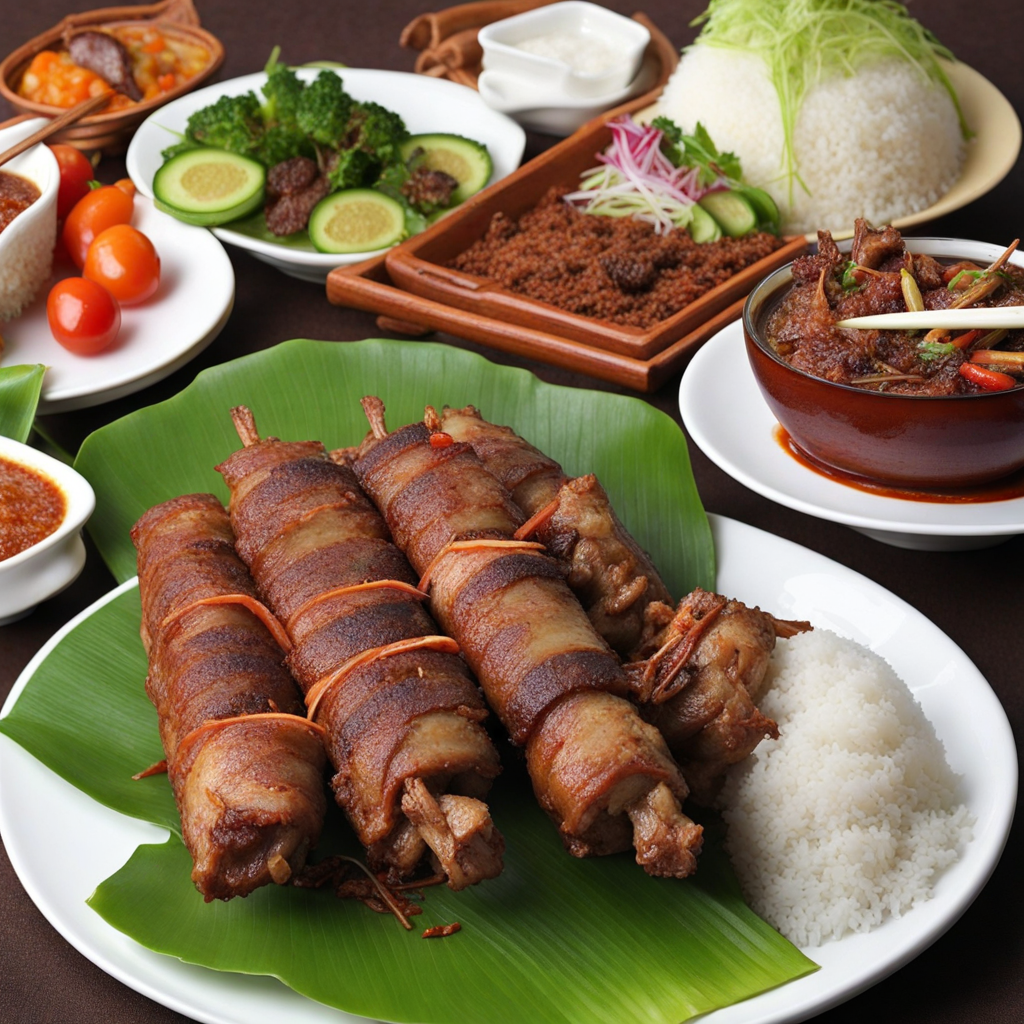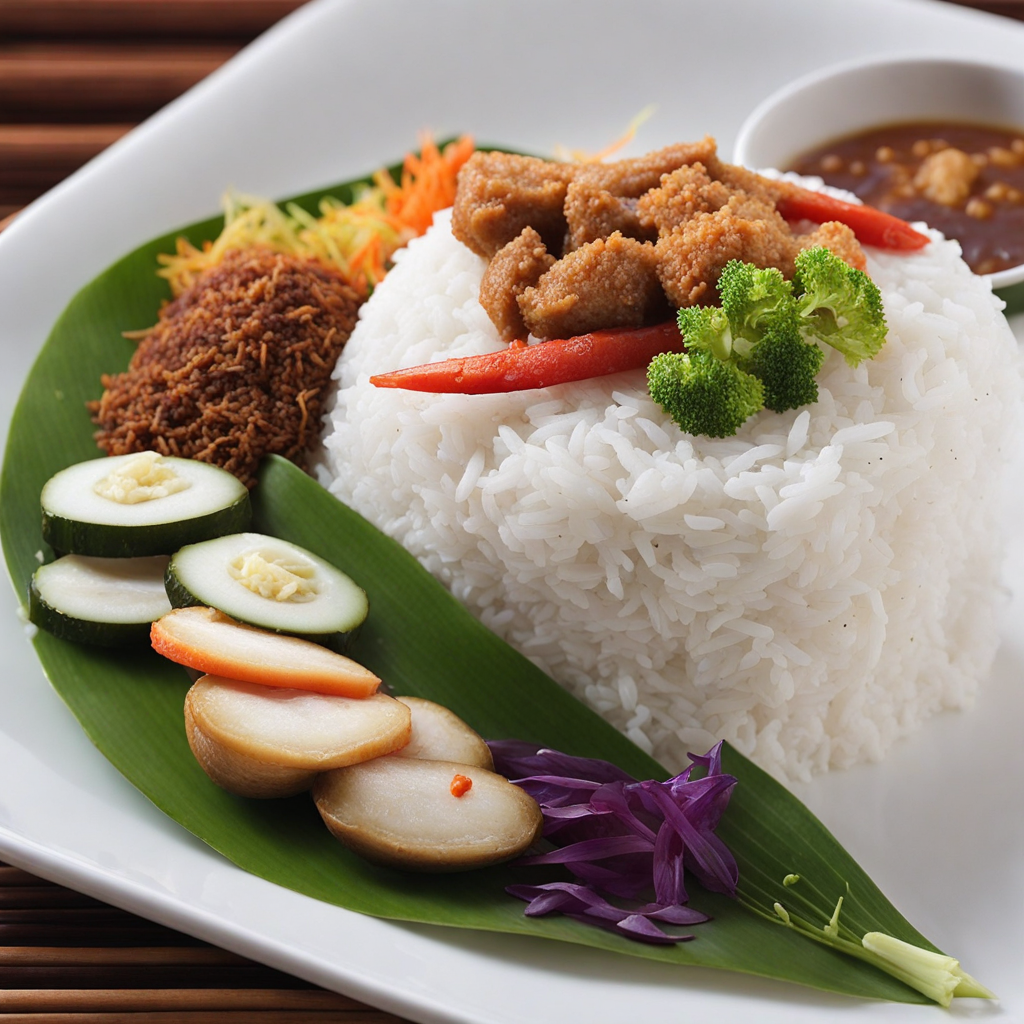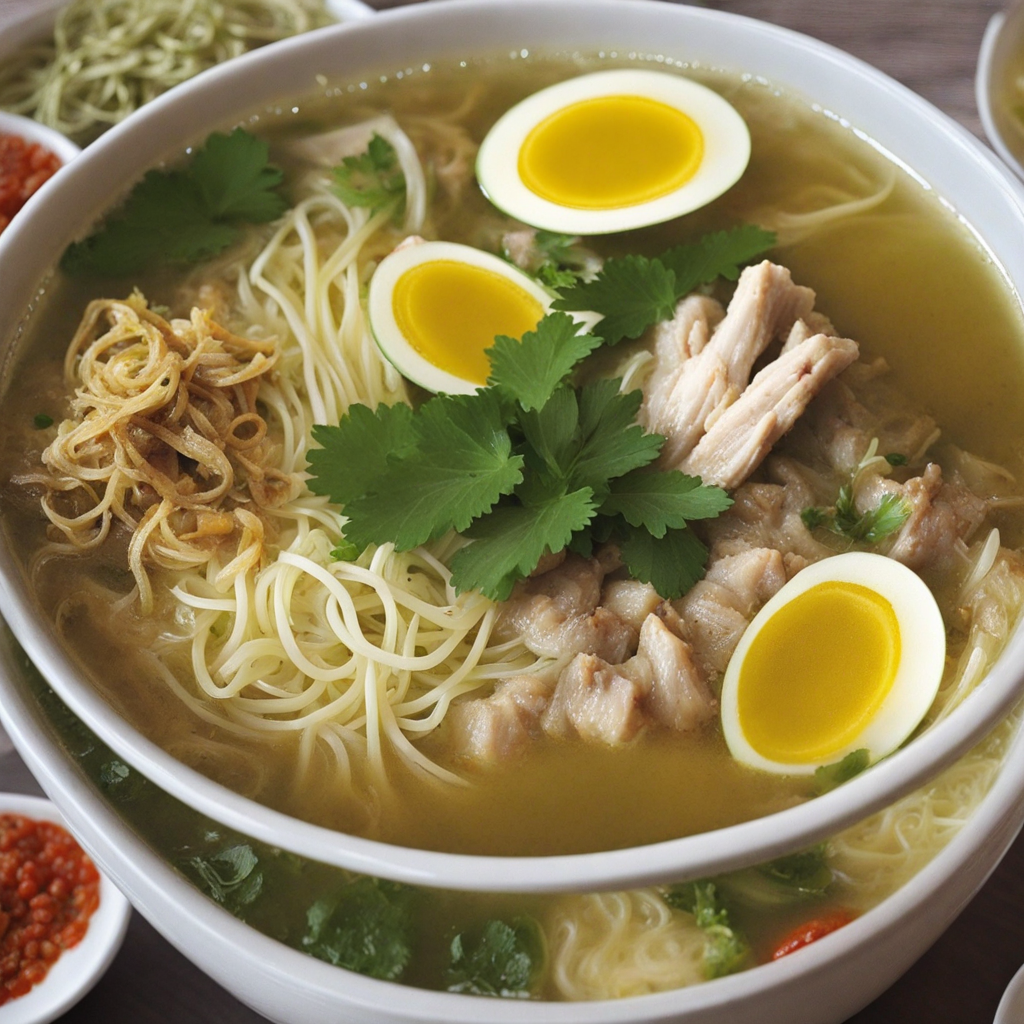Sate Ayam
Sate Ayam, or Indonesian chicken satay, is a delightful street food that captivates the senses with its aromatic spices and smoky flavor. The dish consists of marinated chicken skewered on bamboo sticks and grilled to perfection over an open flame. The marinade typically includes a harmonious blend of ingredients such as soy sauce, garlic, turmeric, and lemongrass, which infuse the chicken with a rich, savory taste. The grilling process caramelizes the exterior, creating a slightly charred and irresistible crust while keeping the meat juicy and tender on the inside. What sets Sate Ayam apart is its accompanying peanut sauce, a creamy and slightly sweet dip that enhances the overall experience. This sauce is made from ground roasted peanuts, coconut milk, and a touch of chili, providing a perfect balance of richness and spice. As you dip the succulent chicken skewers into the sauce, each bite reveals layers of flavor that dance on the palate, making it a truly indulgent treat. The dish is often served with rice cakes or lontong, which complement the satay and offer a satisfying texture. In Indonesia, Sate Ayam is not just a meal; it is a social experience often enjoyed at family gatherings or street food stalls. The vibrant atmosphere of bustling markets, filled with the tantalizing aroma of grilling satay, adds to the allure of this dish. Whether you enjoy it as a quick snack or a hearty meal, Sate Ayam is a culinary journey that showcases the rich flavors of Indonesian cuisine, inviting you to savor each moment and discover the essence of its culture.
How It Became This Dish
Origins of Sate Ayam Sate Ayam, or chicken satay, is a beloved dish from Indonesia that has captured the hearts of food lovers worldwide. The origins of this flavorful delicacy can be traced back to the early days of Indonesian history, influenced by a blend of indigenous culinary practices and the rich tapestry of cultural interactions brought about by trade and colonization. The word “sate” itself is derived from the Arabic word “satti,” which means to grill or roast, highlighting the dish's connections to the Arab traders who introduced various spices and cooking methods to the Indonesian archipelago. The use of skewered meat dates back to ancient times, with evidence suggesting that early Indonesian communities prepared grilled meats long before the arrival of foreign influences. Over the centuries, as Indonesia became a melting pot of cultures, including Indian, Chinese, and Middle Eastern, Sate Ayam evolved into a dish that not only showcased local ingredients but also embraced the spices and flavors introduced by these diverse cultures. Traditional Sate Ayam typically consists of marinated chicken pieces skewered on bamboo sticks, grilled over charcoal, and served with a variety of dipping sauces, most notably a rich, savory peanut sauce. \n\n Cultural Significance Sate Ayam is more than just a culinary delight; it holds significant cultural importance in Indonesia. It is often associated with communal gatherings, celebrations, and street food culture. The dish is a popular choice at festivities, weddings, and family reunions, where people come together to enjoy the delicious flavors and share in the experience of eating. The act of grilling and sharing Sate Ayam fosters a sense of community and togetherness, reinforcing social bonds among families and friends. Furthermore, Sate Ayam is a reflection of Indonesia's diverse cultural heritage. Each region has its own unique take on the dish, influenced by local ingredients and cooking techniques. For instance, in Bali, Sate Ayam might be marinated in a blend of Balinese spices and served with a spicy sambal, while in Java, it may be accompanied by a sweeter peanut sauce. This regional variation not only highlights the versatility of Sate Ayam but also underscores the rich culinary tapestry that defines Indonesian cuisine. \n\n Development Over Time As Indonesia entered the 20th century, Sate Ayam began to gain recognition beyond its borders. The rise of food stalls and street vendors in urban areas played a crucial role in popularizing the dish, making it accessible to a wider audience. The bustling streets of Jakarta, Bandung, and Yogyakarta became famous for their vibrant sate sellers, each offering their unique recipes and styles of preparation. The lively atmosphere of these street food markets contributed to the dish's status as a quintessential Indonesian experience. The globalization of cuisine in the late 20th and early 21st centuries further propelled Sate Ayam into the international spotlight. As Indonesian communities spread across the globe, they brought with them their culinary traditions, introducing Sate Ayam to diverse audiences. Restaurants specializing in Indonesian cuisine began to sprout up in major cities worldwide, serving Sate Ayam alongside other traditional dishes. Food festivals, cultural events, and culinary expos also featured the dish, allowing more people to experience its unique flavors and cultural significance. \n\n Modern Interpretations In recent years, Sate Ayam has seen a revival and reimagining in both Indonesia and abroad. Chefs and home cooks alike have embraced the dish, experimenting with different marinades, cooking methods, and accompaniments. While traditional recipes often focus on the classic peanut sauce, contemporary interpretations may include various dips such as spicy chili sauces, yogurt-based dressings, or even fusion twists that incorporate flavors from other cuisines. Moreover, the rise of health-conscious eating has led to innovative approaches to Sate Ayam. Grilling techniques have evolved, with an emphasis on using organic ingredients and marinating with healthier options. Additionally, vegetarian and vegan adaptations of Sate Ayam have emerged, using tofu or tempeh as alternatives, allowing a broader audience to enjoy this iconic dish. \n\n Sate Ayam in Popular Culture Sate Ayam’s impact extends into popular culture as well. It is often featured in food blogs, cooking shows, and culinary competitions, showcasing its versatility and appeal. Social media platforms have played a significant role in popularizing the dish, with food enthusiasts sharing their own takes and variations. The vibrant presentation and mouthwatering appeal of Sate Ayam make it a favorite subject for food photography, further enhancing its visibility on a global scale. Additionally, the dish is often incorporated into culinary tourism, attracting travelers eager to experience authentic Indonesian flavors. Many culinary tours in Indonesia include Sate Ayam as a highlight, allowing visitors to not only taste the dish but also learn about its preparation and cultural significance from local chefs and street vendors. This immersive experience deepens the appreciation for Sate Ayam, connecting people to the rich traditions and stories that surround it. \n\n Conclusion: A Culinary Legacy Sate Ayam has transcended its humble origins to become a symbol of Indonesian culinary heritage. Its journey from traditional street food to a globally recognized dish reflects the dynamic nature of food culture, shaped by history, regional diversity, and modern influences. The dish continues to evolve, adapting to contemporary tastes while holding onto its cultural roots. As Sate Ayam garners attention on the world stage, it serves as a delicious reminder of Indonesia's rich culinary landscape and the importance of food in bringing people together.
You may like
Discover local flavors from Indonesia







